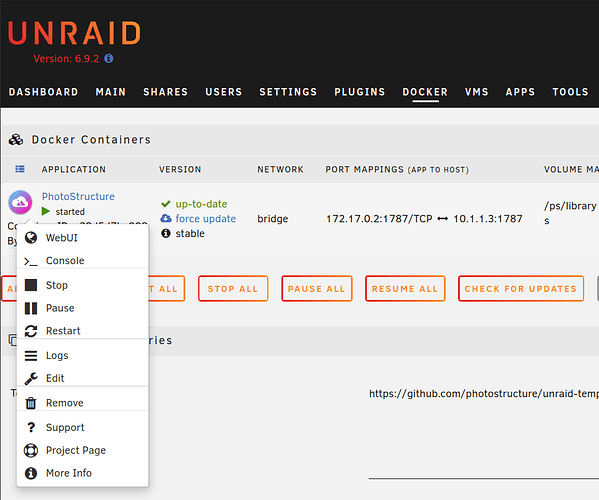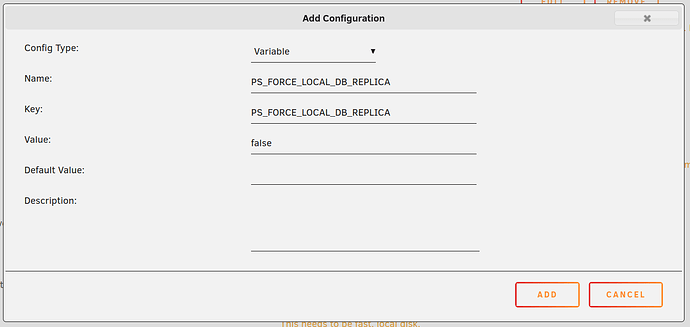If you’re running PhotoStructure on an Unraid box and having issues:
First off, sorry that it didn’t just work out of the box for you!
Use the official template
Make sure you’re using the latest official docker template in Community Applications:
No images show up
If your home page is empty, navigate to the About page and look at the “health checks” section: you may see a warning: Only 4 GB are available on /.
PhotoStructure pauses the import process if the disk space for the library is limited. This health check prevents PhotoStructure from filling up a volume, which can cause issues if the volume is a system disk.
There are several solutions:
- Allocate more disk space to your library volume. This is the best solution.
- Reduce the minimum disk free that PhotoStructure requires. This is controlled via the
minDiskFreeGbsetting, which defaults to 6. (example env:PS_MIN_DISK_FREE_GB=4) - Disable this test altogether via the setting
healthCheckFreeSpace. (example env:PS_HEALTH_CHECK_FREE_SPACE=false)
Check cache pool
Several users have found problems when using Unraid’s cache pool for their library storage. No and Prefer seem to work OK, and Yes is problematic.
If your library is on local disk, tell PhotoStructure:
Go to the docker tag in the Unraid web UI, click the PhotoStructure icon by the docker container, and click Edit:
- Click “Add another Path, Port, Variable, …”
- Select “Variable”
- For
NameandKey, enterPS_FORCE_LOCAL_DB_REPLICA - For
Value, enterfalse - Click
[ ADD ], then[ APPLY ].
(I will make this the default value in the template soon!)
See more about this setting here.
Check the logs
Go to the docker tag in the Unraid web UI, click the PhotoStructure icon by the docker container, and click Edit. Click “Show more settings…”, and change Logging level to debug:
Click [ APPLY ]. Then return to the Docker tab, click the PhotoStructure icon, and click Console.
In the window popup, type ./photostructure logtail and hit return:
Look for warn or error log entries.
Be sure to set this back to warn or error after you’ve got everything working: debug logging impacts performance.
Still stuck?
If this page doesn’t get you going, please leave a comment here or pop into our Unraid discord and ask for help.





